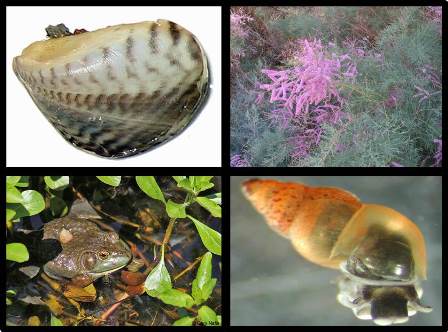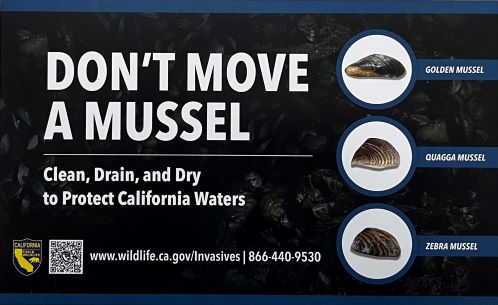CDFW Invasive Species Program
 CDFW Invasive Species Program
CDFW Invasive Species Program
P.O. Box 944209
Sacramento CA 94244-2090
invasives@wildlife.ca.gov
The mission of the Invasive Species Program is to reduce the negative effects of non-native invasive species on the wildlands and waterways of California. We are involved in efforts to prevent the introduction of these species into the state, detect and respond to introductions when they occur, and prevent the spread of invasive species that have become established. Our projects address problems with introduced animals and plants, both terrestrial and aquatic. More fundamentally, we try to identify and address the ways by which the species are introduced, typically inadvertently, by human activities. Studies show that preventing introductions is the most effective and cost-efficient way to manage invasive species. We conduct our work in coordination with other government agencies and non-governmental organizations.
What makes a species “invasive,” how they got here, and why they are a problem.
News
For the latest Invasive Species Program news, subscribe to our announcement list.
New Invasive Mussels Rack Card

Learn more about these invasive mussels, what is being done to prevent their spread, and how you can help.
Detections of Golden mussels in California
Invasive Species Work in Action
Watch these short videos to learn how CDFW scientists look for quagga and zebra mussels (Video)(opens in new tab) and how volunteers contribute to invasive plant removal (Video)(opens in new tab).
Secretary Speaker Series: Defending the Golden State
On June 2, 2023, California Secretary of Natural Resources Wade Crowfoot hosted a panel of experts to discuss how invasive species drive multiple environmental challenges in "Defending the Golden State: Safeguarding California from Invasive Species." Watch the recording (Video).(opens in new tab)
California Invasive Species Action Week
The next California Invasive Species Action Week (CISAW) will be in June 2025. Visit the CISAW page for a schedule of events around the state and links to activities you can do all year long.
Zebra Mussels in Aquarium Moss Balls
The California Department of Fish and Wildlife (CDFW) is asking retailers and consumers to help stop the spread of a dangerous invasive mussel that has been found in aquarium moss balls sold in California and nationwide. Visit the Aquarium Moss Balls web page to learn how you can help.
Eye on Invasives Newsletter
The CDFW Invasive Species Program is proud to present our newsletter, Eye on Invasives. You can find the latest edition here along with our other publications. We look forward to providing you with entertaining and informative invasive species content!
Mute Swan Identification
Did you know that mute swans, different from our native swans, are a growing invasive species threat? They spread from ponds where they are kept as ornamental birds, eat aquatic vegetation needed by other animals, and are aggressive towards other waterfowl and people. Use our Swan Identification Sheet to learn how to tell them apart from native swans.
Invasive Nutria in California
In March 2017, a pregnant, female nutria (Myocastor coypus) was discovered in Merced County. Native to South America, nutria are large, semi-aquatic rodents that are considered one of the world's worst invasive species. Once introduced, nutria rapidly expand in both population size and geographic distribution. Female nutria reach sexual maturity as early as 4 months of age and producing their first litter by 8-9 months of age. They breed year-round, producing up to 3 litters per 13 months, with 2-13 young per litter. Nutria live in social groups consisting of a dominant male, several reproducing females, and juveniles, with maturing males driven out and dispersing up to 50 miles. Visit CDFW's Nutria Incident web page to learn more about the current status of this infestation, what is being done about it, and how you can help.
Quagga / Zebra Mussel Regulations
On February 10, 2016, the California Office of Administrative Law issued a Notice of Approval of Regulatory Action for CDFW's proposed dreissenid mussel regulations. These new regulations, Title 14, sections 672, 672.1, and 672.2, developed under the authority of Fish and Game Code sections 702, 2301, and 2302, became effective April 1, 2016. Visit the Quagga / Zebra Mussel Management page for more information.
Aquatic Invasive Species Identification Poster
The Invasive Species Program has developed an outreach poster to aid in the identification of six invasive species that threaten California's freshwater environments. View the poster (PDF)(opens in new tab), or look for it on display in a CDFW office or hatchery. Would you like a copy of the poster to display? Contact us at Invasives@wildlife.ca.gov to request one.